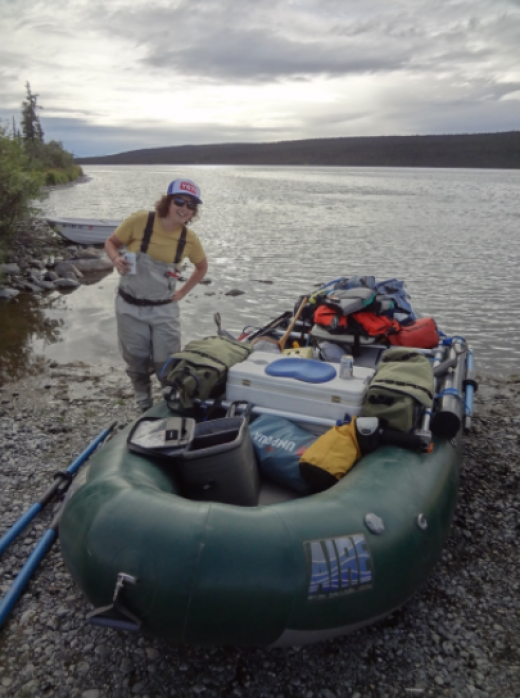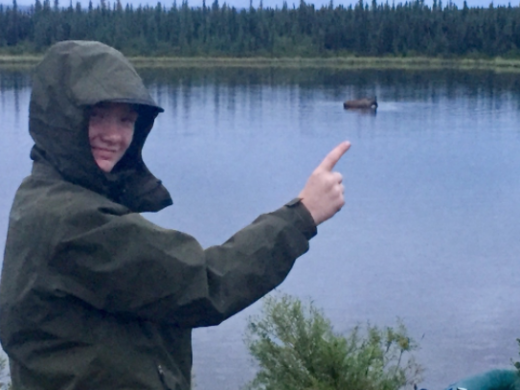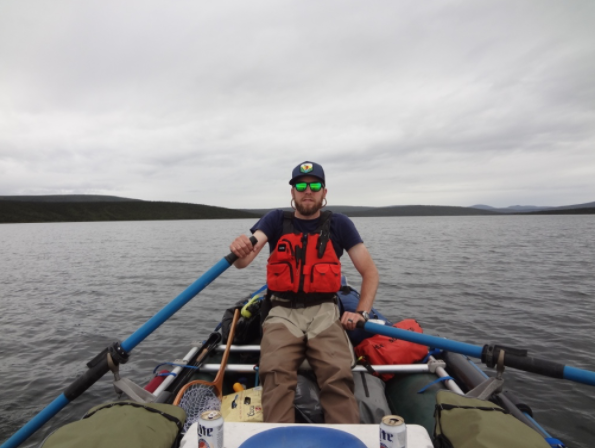By Eric Booton
The image of each fish gently swimming from hand is rapidly blurring into an abstract collage of electric sail fins and speckled red bands graced by the hues of the rainbow. All tallies have been abandoned. I have lost track of the number of fish I have caught, a sure sign of success.
I have spent more time in my waders than not, with every dip of the oars I feel muscles that I didn’t know existed, and calluses are rapidly taking over my hands. They are the pains of several days well spent and my only worry is whether or not the gravel bar we choose for camp will have a reasonably flat and smooth spot for our tent. But I’ll sleep great either way.
 Our trip down Alaska’s Gulkana River is coming to a close sooner than it feels it should. I have found peace on the river and I never want it to end.
Our trip down Alaska’s Gulkana River is coming to a close sooner than it feels it should. I have found peace on the river and I never want it to end.
The Gulkana River is one of Alaska’s 25 Wild and Scenic Rivers, home to abundant arctic grayling and a destination for several anadromous species including Chinook and Coho salmon. Gulkana also boasts North America’s northernmost population of rainbow trout and just like the rest of the inhabitants of the far north, they pack some extra spunk to get by.
Twenty- five may sound like a lot of Wild and Scenic rivers, but for a state with over 12,000 rivers, it’s a drop in the bucket. In fact, less than 1 percent of Alaska’s rivers are graced with this designation. And, I’d safely wager that the vast majority of Alaska’s waterways are worthy of the prestigious title.
To be eligible for designation as a Wild and Scenic river, said river must be free flowing and possess a minimum of one “outstanding remarkable value,” such as wildlife, fish, habitat, recreation, etc.
In the 1960s the impact of man’s follies began to catch up with us as we witnessed the slow death of many of our cherished rivers and valued fisheries as a result of dams, logging, pollution, degraded habitat and more. Therefore, an act of Congress in 1968 established the National Wild and Scenic Rivers System that today helps preserve designated rivers in a free-flowing state to protect recreation, cultural significance, recreation value, and ensure future enjoyment of such priceless resources by the American people.
Our opportunities to recreate and observe the wildlife of the area are indeed proving to be priceless. On the first night we watched a female moose feed, chest deep in the river for an astonishing four hours. We have witnessed king salmon getting busy on creating the next generation on nearly every redd in sight. We have counted river banks with upwards of a dozen beavers on them and spotted bald eagles around seemingly every corner. Caribou are on the move to their winter range and it’s fascinating to ponder how those toothpick legs and hooves can swim a large river so effectively.

The Gulkana River doesn’t even make the list of Alaska’s most notorious rivers. But the fish are here. It’s living up to its label as both “wild” and “scenic.” And in mid-August, we have the river to ourselves … which is ideal.
Naturally, I have high expectations for this river trip, mostly centered around fish I hope to find, and all my expectations are being surpassed (and then some). I notice my wife finding her place on the oars and I am proud of her. I am watching as a 12-year-old boy proves he truly is a young man, working hard in camp after long days on the water and putting in an impressive amount of time on the sticks.
And my wife, Brittney, and I are thankful for the invite to join our friends Chad and Erin on their annual float trip and learn a thing or two from some seasoned veterans.
This has trip been a first for Brittney and me in many regards, and the memories we have made, both tranquil and tense, are guaranteed to fuel me through the dark days of winter and into next fishing season with ease.
Not only has it been an incredible float through the Alaskan wilderness, but it has been a much needed opportunity to unplug from the unending demand of technology and revert to “river time.”
Eric Booton is the sportsmen’s outreach coordinator for TU’s Alaska Program.



